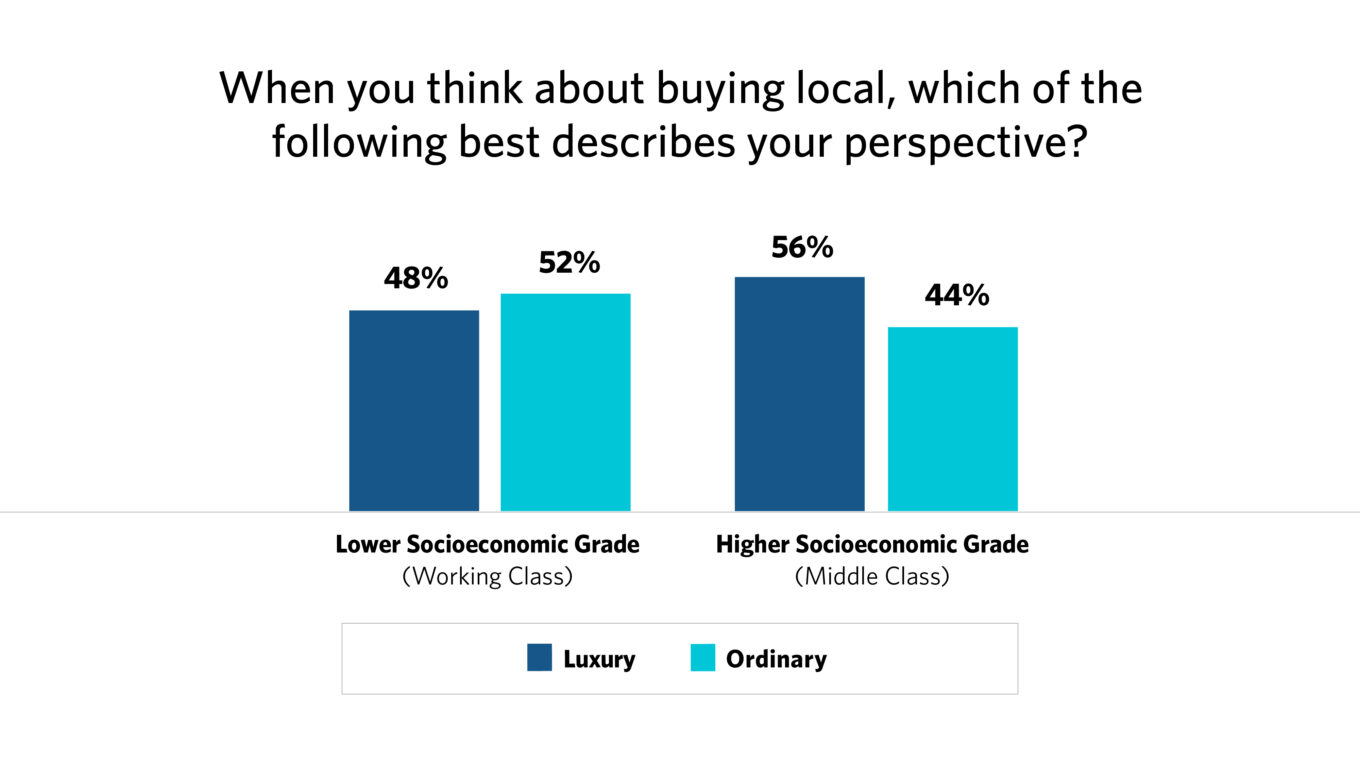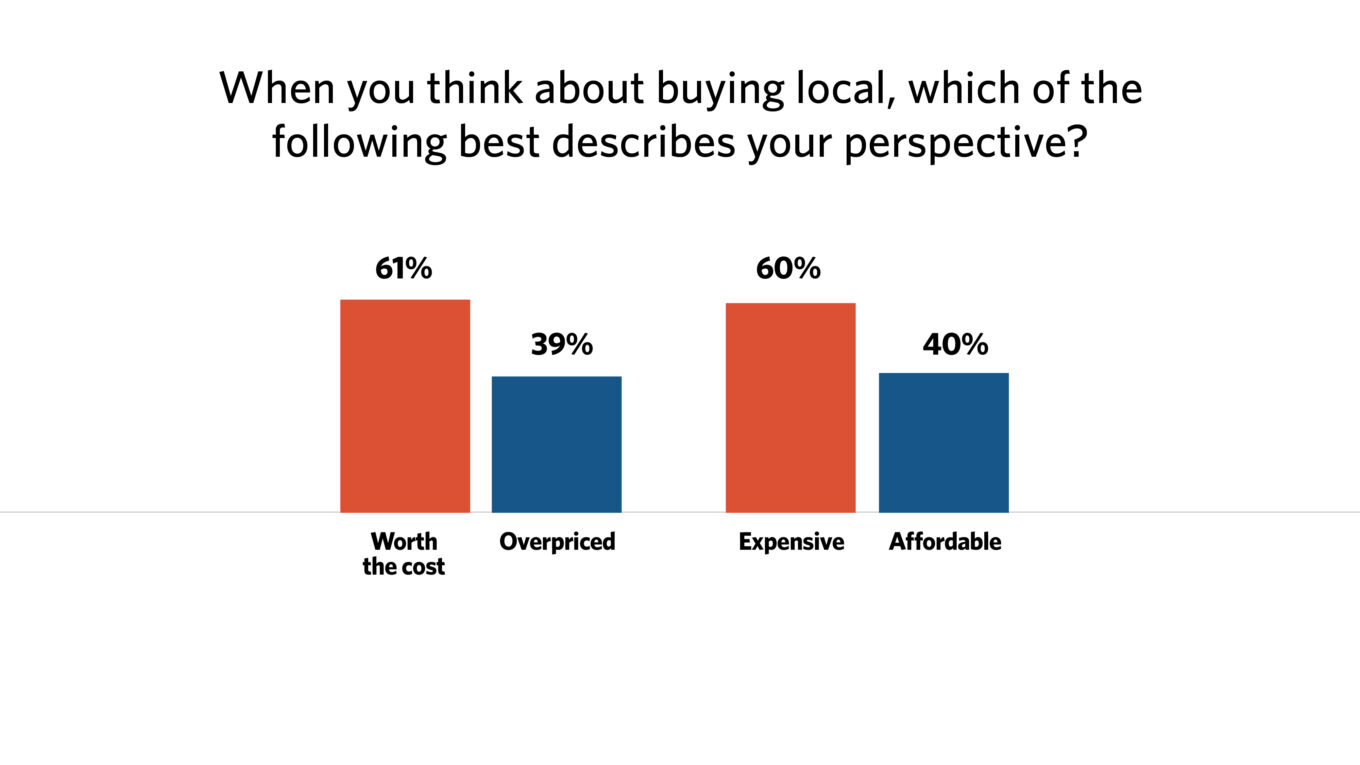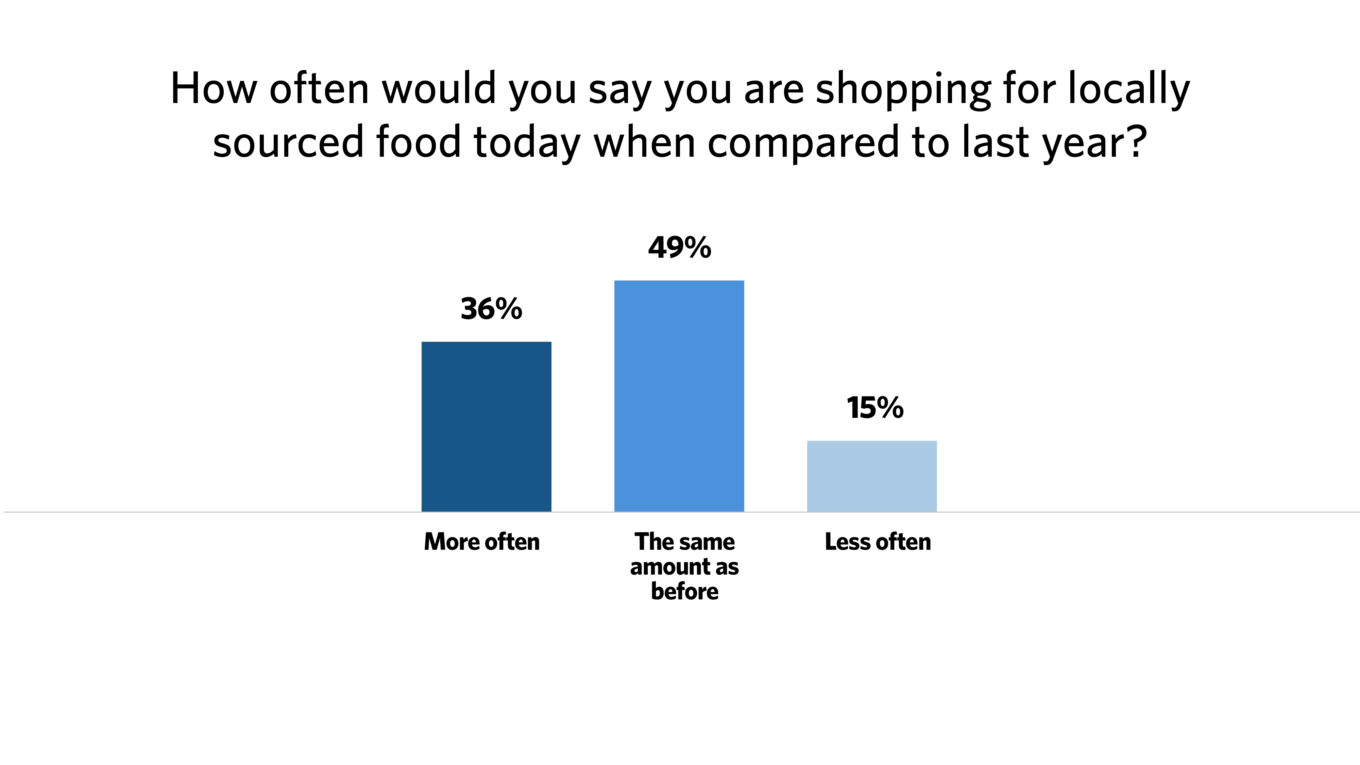Healthy Futures: Exploring buying local and sustainability during the cost-of-living crisis

As the real impact of the cost-of-living crisis unfolds and the food and drink sector finds itself facing a perfect storm of issues, the FleishmanHillard UK Food, Agriculture and Beverage team is exploring the implications for brand and communication teams in our new ‘Cost-of-Living Bites’ series.
Phoebe Rilot, senior research manager in FleishmanHillard UK’s TRUE Global Intelligence team, takes a look at what buying local means to consumers during the cost-of-living crisis and into the future.
 Hot off the heels of COP27 and some of the mildest UK November temperatures on record, the need to think globally, while acting locally, to combat climate change has never been more pressing. What we eat and how we produce it is a good place to start: buying local produce (i.e., food grown/made close to where is it bought) has documented ecological, societal and nutritional benefits. But, during a cost-of-living crisis that’s upending everyday life in Britain, what role does buying local have? And why should brands care?
Hot off the heels of COP27 and some of the mildest UK November temperatures on record, the need to think globally, while acting locally, to combat climate change has never been more pressing. What we eat and how we produce it is a good place to start: buying local produce (i.e., food grown/made close to where is it bought) has documented ecological, societal and nutritional benefits. But, during a cost-of-living crisis that’s upending everyday life in Britain, what role does buying local have? And why should brands care?
New research from FleishmanHillard UK shows almost three-quarters of British consumers with an opinion on the topic say it’s important to them that the food they buy is sustainable (74%)[1], and 69% say it’s important to use local resources to reduce the environmental impact of food[2]. In fact, a University of Sydney study has found that the climate impact of food miles is actually three times greater than previously thought, with rich countries accounting for 46% of global food miles emissions (yet just 12.5% of the world’s population). So, shifting towards a plant-based diet and eating local/seasonal produce might both make a material difference to tackling climate change.
Fresh findings replace stale views: buying local is not the preserve of the posh
Conventional wisdom would have us believe that buying local is the province of the monied middle classes, those with the time and wealth to frequent farmer’s markets and boutique delis. But our research among British consumers shows that the desire to support local economies and producers, eat seasonally and reduce the climate impact of the food they buy is as important to those from lower socioeconomic backgrounds as it is to their middle-class counterparts.
In fact, those in the higher socioeconomic grade (considered middle-class) are more likely to see buying local as a luxury than those in the lower grade (considered working-class): 56% of middle-class consumers say it’s a luxury (44% say it’s ordinary). While 48% of working-class consumers say it’s a luxury (52% say it’s ordinary [3].

A price worth paying: benefits of buying local justify the higher cost
Overall, although British consumers are more likely to see buying local as expensive (60%) than affordable (40%), they are also more likely to see it as worth the cost (61%) than overpriced (39%)[4].

Aside from the sustainability benefits, consumers’ motivations for buying local vary by generation.
Baby Boomers are more likely than younger cohorts to say supporting local farmers/producers and buying British produce are among their top 3 motivations, while Gen X, Millennials and Gen Z are more likely than Baby Boomers to point to higher animal welfare standards and the fact that cost-of-living price increases have made the cost difference between local/non-local produce less pronounced[5].
Habits developed during the pandemic are not a flash in the pan
The pandemic saw a surge in buying local, with 61% of British consumers saying they’re more likely to buy local since working from home/flexibly[6]. Despite the lifting of Covid restrictions throughout the UK, and day-to-day life getting closer to a pre-pandemic ‘normal’ for many, these habits have stuck.
New research from insight agency Hall & Partners reveals only 15% of British consumers are buying less locally sourced food than they were a year ago.
Around half are buying the same amount of locally sourced food as they were last year (49%), and a third say they’re buying more (36%)[7]. What is not yet clear is the extent to which locally sourced food represents the bulk of people’s grocery shopping or whether it still caters for a niche need. However, even if for some the increase in buying local rose from zero to one thing, the desire to stay the path is clear.

Digestible information: how brands and retailers can help
What does all this mean for food and drink businesses? Buying local isn’t a fringe interest confined to certain postcodes or income brackets.
In fact, the vast majority of British consumers with a view say they want to buy even more local produce but their grocery choices ultimately come down to cost (84% agree, with no significant difference between middle and working-class consumers)[8].
Tapping into this conversation is the first step. Consumers are receptive to the efforts of brands and retailers: half say they’d like to see a greater range/availability of locally sourced food in supermarkets (49%) and 46% say the same for clearer locally sourced labelling on aisles and displays[9]. Far from accepting powerlessness in the face of climate change and the cost-of-living crisis, British consumers are seeking local solutions to global problems, and they want brands to step up to support them.
—
Methodology: Research carried out by TRUE Global Intelligence in partnership with Vitreous World.
Online survey fielded to 2,000 UK adults with nationally representative samples for age, gender, region, SEG, ethnicity, sexual orientation and disability. Fieldwork ran from 25th – 28th October 2022.
[1] [3] [4] [5] [8] FleishmanHillard Omnibus, October 2022 (n = 2,000)
[2] [6] FleishmanHillard Authentic Insights Survey, September 2022 (n = 1,023)
[7] [9] Hall & Partners Consumer Survey, November 2022 (n = 962)
Find Out More
-
Platinum CMS Award
March 13, 2024
-
Changing Communications Tack at Mobile World Congress
February 21, 2024


